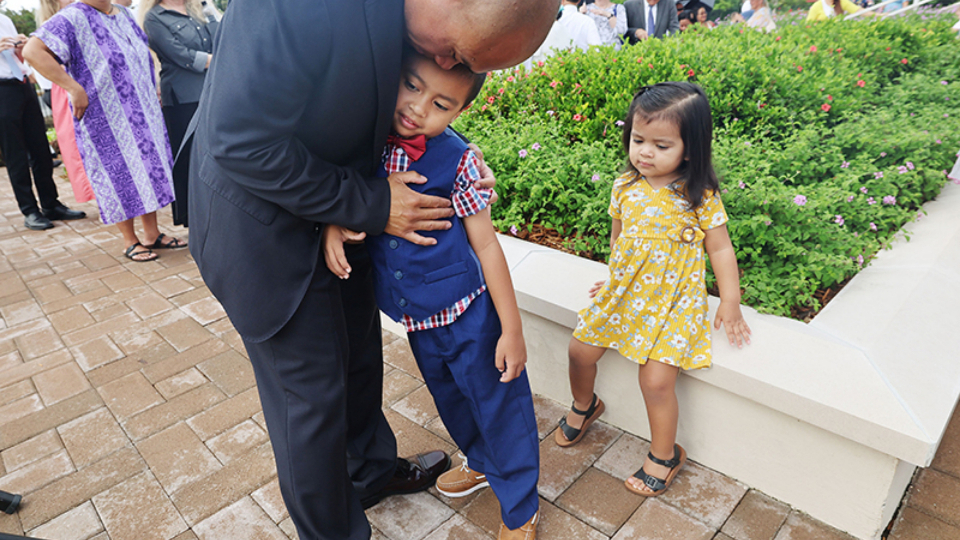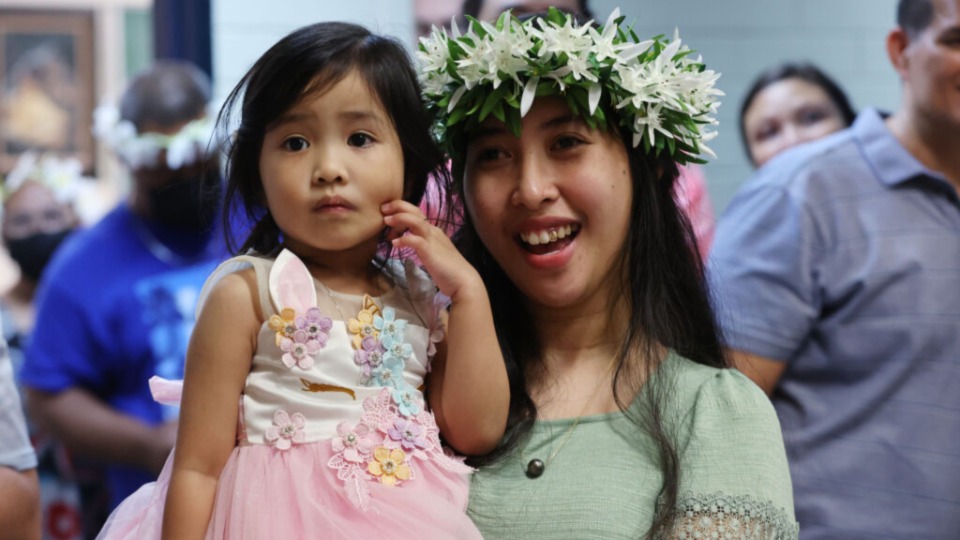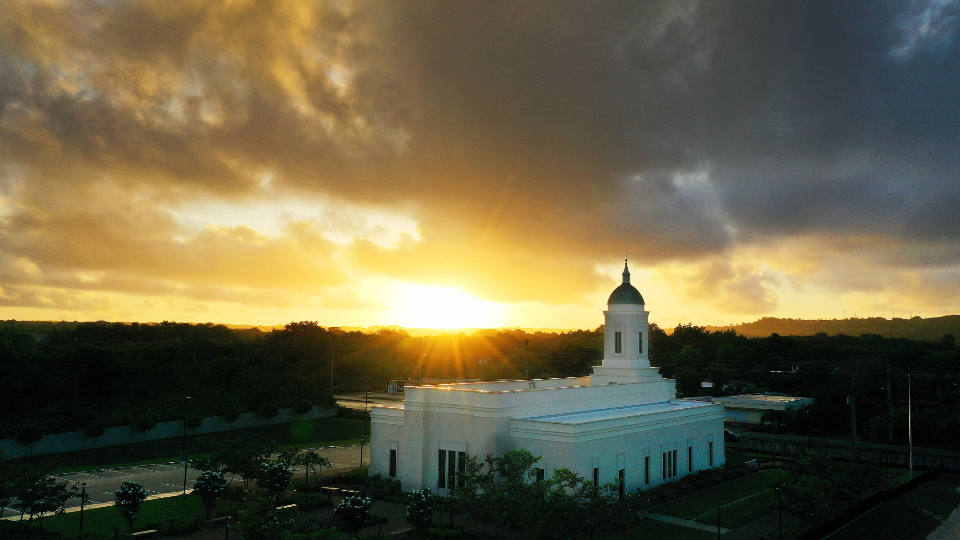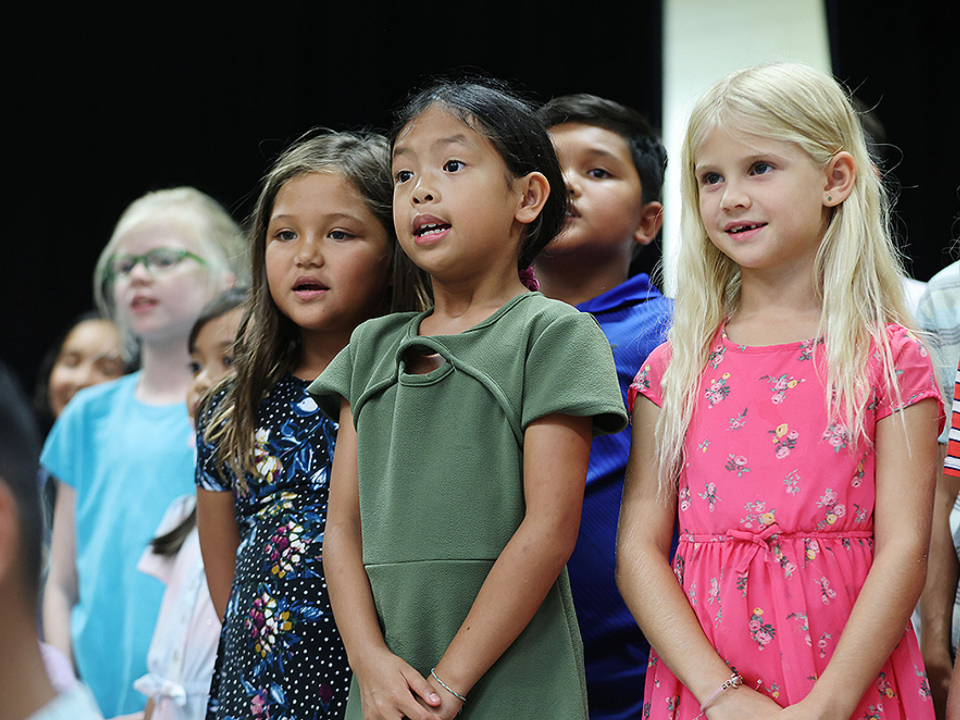Travel to Guam has never been easy. This U.S. territory with stunning views, rich history, and faithful Latter-day Saints, is located in the north Pacific Ocean, near the border of the Philippine Sea.
To reach these Western Pacific islands, visitors can fly five hours south from Tokyo, Japan, eight hours west from Honolulu, Hawaii, four hours east from Manila, Philippines, or six hours north from Brisbane, Australia.
Those are the same routes — only in reverse — that have been taken by members of The Church of Jesus Christ of Latter-day Saints in Guam in order to attend the temple.
That changed Sunday, May 22, with the dedication of the Yigo Guam Temple — the Church’s first temple built in Micronesia.
- Guam-temple
- Guam-temple
- Guam-temple
- Guam-temple
- Guam-temple
- Guam-temple
- Guam-temple
- Guam-temple
- Guam-temple
- Guam-temple
- Guam-temple
- Guam-temple
- Guam-temple
- Guam-temple
- Guam-temple
- Guam-Temple
- Guam-temple
- Guam-temple
- Guam-temple
- Guam-temple
- Guam-temple
- Guam-temple
- Guam-temple
- Guam-temple
- Guam-temple
| Temple Square is always beautiful in the springtime. Gardeners work to prepare the ground for General Conference. © 2012 Intellectual Reserve, Inc. All rights reserved. | 1 / 2 |
Elder David A. Bednar, of the Quorum of the Twelve Apostles, presided at the temple’s dedication and shared both his feelings and apostolic counsel about temples and their role in helping individuals learn about and become more like the Savior.
“We speak much of the temple, but we should always first connect Jesus Christ with the temple,” Elder Bednar said.
He was joined by his wife, Sister Susan Bednar; Elder Michael John U. Teh of the Seventy and his wife, Sister Grace Teh; and Elder John A. McCune, of the Seventy and Second Counselor in the Asia North Area presidency, and his wife, Sister Debbra McCune.
The temple will serve 2,500 members in the Barrigada Guam Stake and thousands more from the surrounding islands of Micronesia. The Namoneas Chuuk District (600 miles southeast of Guam), the Panasang Pohnpei Stake (400 miles east of Chuuk) and the Kosrae Micronesia District (300 miles east of Pohnpei) are also part of the temple district.
Closer Temple, Big Impact
The new temple provides members in this district a renewed opportunity to focus on the Savior and our covenant connection to Him, said Elder Bednar.
“The size and architecture of the temple are interesting, but the building is not the focus,” he said. “What occurs inside the temple, as we worthily receive covenants and ordinances, is what the temple is about.”
The Yigo Guam Temple is one of the smallest built by the Church. “But we do not have small temples,” Elder Bednar said. “A temple is a temple. The covenants and ordinances are exactly the same in every temple, regardless of size.”

Guam-temple
Bishop Mabini Calairo Jr. holds his children Mabini and Mariella at the Yigo Guam Temple dedication in Yigo, Guam, on Sunday, May 22, 2022.Building temples closer to the people has allowed for increased flexibility in the temple’s design. For example, the new temple in Guam has two rooms that can function as instruction rooms or sealing rooms, depending on what is needed on a given day. That flexibility allows for the right ordinances to be available at the right time for Church members.
Lori Boss, a member of the Barrigada Ward who served on the local temple committee, said this temple is much more important than many people around the world might realize.
“This may not seem like it makes a big difference to people who live far away from here,” she said, comparing past temple travel to the present. “But to go all the way to Manila to get a visa is very different than it is to jump on an island hopper.”
And outside that significant change for individuals and their ease of getting to the temple, another benefit stands out in Boss’ mind.
“I think this will be a bonding moment — not only literally for families, but of the people.”
Elder Bednar said great blessings await Latter-day Saints in the temple.

Temple-Celebration-Guam
“We come to the temple to receive and review the covenants and ordinances for the express purpose of having them written in the fleshy tables of our hearts,” he said. “The objective for any member of the Church is to have these sacred things written in their hearts.”
Eighteen years after moving away from Guam, Brittney Rigdon knew she had to find her way back to participate in the temple dedication.
Having grown up on Guam, she feels particularly blessed to have been in a position to return to the island for the dedication. She and her family currently live in Japan.
“Regardless of the size of the temple, the covenants and ordinances are exactly the same, no matter where you go,” she said. “The ordinances are individual and are going to be the same, no matter what.”
Each and every temple can provide a special atmosphere and feeling far different than that of the outside world. Elder Bednar said he hopes those who attend the temple appreciate the peace found in it.
“We hope the contrast between the Spirit we feel in the temple and commotion of the world is never diminished by frequent attendance.”
“In the temple, we experience a stillness that we may not have thought could exist in mortality. Over time, we learn that stillness can be in us in any circumstance inside or outside of the temple,” he said. “What we can learn over time is that we are being changed – the Holy Ghost is helping us to become men and women of Christ.”
“The purpose of the gospel is to become like the Savior. We serve, we learn, we do what He did, and that transforms us,” Elder Bednar said.

Guam-temple
The sun sets on the eve of the Yigo Guam Temple dedication in Yigo, Guam, on Saturday, May 21, 2022.
Some of those changes start before someone has entered the temple for the first time.
Bishop Rod Boss of the Barrigada Ward witnessed this as he helped members of his ward prepare for the temple’s dedication.
“Several families in my ward have been working hard since last year to have temple recommends,” he said. “And to come in and to see the smiles on their faces as they came in as a family was a really sweet experience for me.”
Families working together and helping each other to be prepared to enter the temple is an example of Christlike love. Elder Bednar talked about service to others as being a part of the nature of Christ.
“Our fundamental responsibilities are not to live the gospel so that we will be blessed,” Elder Bednar said. “It is to live the gospel so that we can bless others.”
Church Units Born in a Time of War
The first Church members arrived in Guam when sent to the island as members of the armed forces during World War II in 1944.
At that time, organized branches on the island were under the ecclesiastical leadership of the Far East Mission. By 1953, the first buildings of the Church — two Quonset huts — were dedicated, and leadership was then designated from the Oahu Hawaii Stake.
The first missionaries did not arrive in Guam until 1957.
Today, the Church has one stake on Guam — the Barrigada Guam Stake — made up of four wards and one branch.

Guam-temple
Children sing as Church members celebrate the dedication of the Yigo Guam Temple at the Barrigada Stake Center in Guam on Friday, May 20, 2022.
The Book of Mormon has not been completely translated into the native Chamorro language spoken by many in Guam, but selections of it have been available since 1989. Fewer than one-third of Guam’s 171,000 inhabitants speak Chamorro, with a few thousand others in the Mariana Islands also speaking the language.
The temple was one of 12 announced in October 2018 by President Russell M. Nelson. It was in that conference message that President Nelson said, “Building and maintaining temples may not change your life, but spending your time in the temple surely will.”
Seven months later, ground was broken on the temple in Yigo.
Elder Yoon Hwan Choi, then-president of the Asia North Area for the Church, presided over the groundbreaking and dedicated the temple site on May 4, 2019.
Three years later, on Sunday, May 22, Elder Bednar dedicated the temple in three sessions.
When asked about the significance of a temple being built in Guam, the president of the Barrigada Guam Stake, President Fredivic Nicerio, said, “I believe in the promises made by prophets to the people of the isles of the sea.”
President Nicerio was referencing a verse from 2 Nephi 29:7 where the Lord tells Nephi, “I, the Lord your God, have created all men, and that I remember those who are upon the isles of the sea; … and I bring forth my word unto the children of men.”
Recent years have been difficult for Latter-day Saints in Guam, where the COVID-19 pandemic posed challenges to Guam and other islands in the area. Many islands closed their borders completely as a precaution. Guam’s pandemic-related restrictions eased last month with the removal of in-person attendance restrictions being lifted. But others, like the island of Yap, still have their borders closed.
“Here, COVID ravaged our homes,” President Nicerio said. “But a temple here will bless us temporally and spiritually.”
“The temple is a blessing that is already helping people focus on what they need to do to be an eternal family,” he said. “It is a place to take refuge from the storm —whatever the storm is.”


